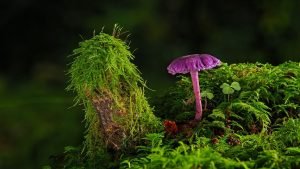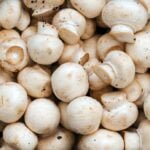Field Blewit Spores
Field Blewit Spores are a kind of fungus that may be discovered all through the world. They are available in varied varieties, together with Lepista sordida, Wood blewit, and Purple webcaps.
Wood blewit
The wooden blewit is a saprobic fungus that grows on useless leaves or wooden, in addition to different natural materials. It is usually present in grasslands and woodlands. In addition, it’s usually present in mulched areas.
This mushroom is quite common, particularly in North America. It may also be present in Canada and in Britain. However, its distribution is sort of scattered. When you first discover it, it’s often shiny blue or violet. With time, nevertheless, it loses its blue shade.
This saprobic fungus has a strong stipe that’s 6-8 by 4-5mm. It has a thick bulbous base, a fleshy spongy heart, and is ornamented with tiny spines.
The gills are lilac, blue, or violet. As the gills develop into mature, they’re darker in shade.
The spore print of the wooden blewit is pale pink. You can acknowledge a blewit by its odor, which is fruity and considerably aniseed-like.
The gills of the wooden blewit will develop into brown because it ages. Wood blewit species are present in each broadleaved and coniferous woodland. They are recognized for his or her capability to face up to freezing temperatures.
Wood blewits are an incredible decomposer. They recycle vitamins again into the soil. Typically, they develop on rotting natural matter and feed on it. These mushrooms might be present in wooden flooring, parks, and hedgerows.
Some species of the wooden blewit are edible. However, in the event you plan to eat them, it’s best to do it fastidiously. There is a chance that the gills can comprise probably problematic compounds. Therefore, it’s higher to prepare dinner these mushrooms earlier than consuming them.
Identifying a wooden blewit might be complicated, as this fungus has a number of totally different names. You can distinguish between a wooden blewit and a Cortinarius by their form, odor, and spore print.
The wooden blewit is discovered within the wild all through the United States, Canada, and Europe. A couple of species are commercially grown in some international locations. However, the industrial blewits are usually fairly totally different from the wild ones.
If you are taken with gathering this tasty fungi, the most effective factor to do is to rent an knowledgeable. Alternatively, you may strive your hand at it.
Lepista sordida
The Lepista sordida Field Blewit Spores are the fruiting our bodies of this saprobic species. It is present in quite a lot of areas together with blended woodlands, gardens, and compost piles. This mushroom is edible and has a nice taste.
There are a number of species of this fungi, however all have similarities to 1 one other. They are all associated to the genus Clitocybe, and most are frequent in North America and Europe. These mushrooms might be present in deciduous woodlands and compost piles.
The Sordid Blewit is a violet-capped species. When younger, the cap of the mushroom is gentle grayish lilac. As it ages, the colour modifications to tan brown from the middle.
The gills of the sordid blewit are sinuate and broad. They are additionally crowded. A saprobic mushroom, the sordid blewit is utilized in comparable methods as different blewits.
The Lepista sordida spores are a creamy white to pale pink. When cooked, they’ve a gentle candy mushroomy taste. Various bioactive compounds within the sordid blewit have been reported to have anti-microbial and antioxidant properties.
In addition to its edible qualities, the Sordid Blewit is helpful for its antioxidant and immune modulating properties. Because of those properties, trendy pharmacological trials have discovered promising dietary advantages.
The Wood Blewit is a typical and well-liked mushroom forager. In North America, it’s discovered principally within the fall and winter months. However, in Europe and Germany, it is named the violette rotelritterling.
This species is commonly confused with different violet-capped species. If you might be on the lookout for a extra strong stem, it’s best to have a look at the Violet Webcap (Cortinarius violaceus).
The Wood Blewit and the Sordid Blewit are each edible. Both are good for sauteed dishes, soups, and meat dishes. To make certain, each are value taking house. Their odors are harking back to frozen orange juice.
Compared to the opposite Lepista species, the sordid blewit is just not as strongly flavoured. For this motive, many cooks are reluctant to combine it with different types of mushrooms. However, they may nonetheless go effectively with macaroni and different fried dishes.
Although not as widespread as the opposite blewits, Lepista sordida is commonly found growing close to the Wood Blewit.
Lepista irina
If you are available in the market for a tasty fungus so as to add to your salads and soups, blewits are an incredible alternative. They are recognized to be an excellent addition to any meals, particularly with onions, garlic and recent sage. You may grow them in your garden and even on a compost pile.
There are a number of sorts of blownit. One of the extra generally discovered is the Wood Blewit. This species grows in forests and woodlands and is often smaller than its subject counterpart. It’s often eaten as a cooked dish, although some folks discover it extra palatable uncooked. The finest time to reap is early winter.
A lesser recognized selection is the Flowery Blewit. These mushrooms are a bit simpler to identify, if solely as a result of they develop in clusters and are not as dense as different varieties. However, it is nonetheless not as palatable as a Wood Blewit.
The Flowery Blewit can also be the title of one other kind of blewit, and it is one of the frequent in Britain and Ireland. As such, you may usually discover them rising on woody particles within the floor or in fairy rings. But if you wish to eat the flowery blownit, you may must be cautious. While it is a cool mushroom to have a look at, its flavour is not terribly candy.
For the true blownit fanatic, you could discover that the Wood Blewit is a extra acceptable title. This species is extra of a rarity in England, however is discovered all through mainland Europe. In Britain, it isn’t unusual to search out them within the Beech woodlands of southern England.
The Clouded Agaric is a cool-looking mushroom that was a tasty deal with. However, it is now thought of poisonous. Although the clouded blownit remains to be a deal with in components of Western France, it isn’t a staple in British delicacies.
If you’ve got a pleasant, damp location, you may attempt to develop some blewits your self. Several industrial variations are bought, however they’re often very totally different from the wild model. Some species even have attention-grabbing odors.
If you are on the lookout for a cool fungus so as to add to your salads, you may’t go flawed with a Wood Blewit. Or you may go for a extra specialised and rarer species.
Purple webcaps
A standard wild mushroom in Britain is the Wood Blewit, which may also be often known as Blue Cap. It is present in woodlands and coniferous forests, and is a typical and edible species. But earlier than you get began on the lookout for this fungus, there are some things it’s best to know.
The Wood Blewit is a small, polyphyletic mushroom that looks somewhat like a chanterelle. You can see it within the late autumn or early winter, particularly in southern Britain and Ireland.
There are two subgenera throughout the Wood Blewit. It is just not frequent in clumps. However, it may be present in scattered teams.
Another comparable mushroom is the Purple Webcap. It has a darkish rusty brown spore print, and appears just like the Wood Blewit. However, the Purple Webcap is toxic and comprises probably troublesome compounds.
Unlike the Wood Blewit, the Purple Webcap has a purple, thick, wavy cap, and a shorter, thinner stem. It grows in teams, and fruiting in small teams beneath pine timber.
When it’s younger, the purple Webcap has a deep purple color. As the mushroom ages, the cap will flip to a darker, mauve color. Occasionally, the margins of the fungus will retain their purple shade.
While they don’t seem to be probably the most poisonous webcaps, they are often mistaken for the extra harmful toxic varieties. If you’ve got come throughout a purple webcap, do not eat it.
Although the Purple Webcap and the Field Blewit are comparable in look, the Field Blewit has a shorter, smoother stem and a darker shade. The Field Blewit may also be confused with the gillless chanterelle, which has a thicker, club-shaped base.
These two mushrooms are carefully associated, however the genus is in want of revision. They have been as soon as known as Lepista, however have been demoted to the subgenus Clitocybe in 1969. Some subject guides name the Field Blewit Clitocybe saeva.
Besides their color, they’ve a candy, perfumed odor. They are wonderful with recent sage and onions, however they must be effectively cooked. Despite this, they could be a bit bitter and they don’t seem to be a good selection for stews or soups.




